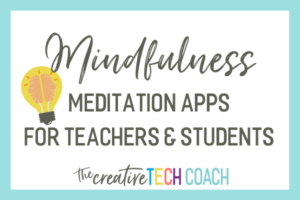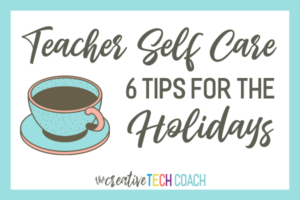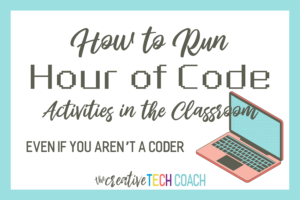While it is fairly new to me, flipped learning it is a recognized instructional strategy in many classrooms that are attempting to integrate technology into their instruction (Bull, Ferster, & Kjellstrom, 2012). Shenninger (2014) asserts that flipped learning is “proving to be a key asset to modern education” (p. 156). One of the main purposes of flipped learning is to break the paradigm of lecture-based instruction and move towards one that is more student-center and designed based on students’ needs (Hamdan, McKnight, McKnight, & Arfstrom, 2013). Flipped learning does not do away with direct instruction all together, but rather presents that part of the lesson via video and other online materials for students to watch outside of class, leaving more time in class for guided practice and hands-on learning (Bull et al., 2012; Hamdan et al, 2013).
When I am approached with a new instructional strategy, I always think about how I could use it in my second grade classroom. Originally, I did not think that the flipped-classroom model could be utilized in my classroom for two reasons: 1. My students are only 7 and 8 years old, and 2. Many of my students do not have access at home to devices or Internet. In regards to the latter reason, Bull et al. (2012) state in their article: “Digital equity is one issue that educators must address during implementation of flipped-classrooms” (p. 11). One weakness of the flipped-classroom model is that unless devices and offline versions of videos are provided not all students may have access.
Upon further considering the model, I realized that actually my guided reading and guided math models of instruction were perfect for integrating flipped learning. While some students are working in small groups with me or each other, other students could be receiving the direct instruction portion of the lesson through mobile devices. Flipping instruction in this manner does not only solve the problem of access, but also gives the young learners my support since they would be accessing the direct instruction portion in the classroom.
I think that the flipped model could certainly be used with professional development and parent-teacher conferences. Because embedding professional development for technology integration is so important (Jones, 2007), training on the flipped learning model would be perfect presented in a flipped-learning context! Also, contacting parents prior to conferences via video would let them know what you plan to discuss and allow them to prepare questions before meeting in person.
One last thought about the flipped-classroom model: Simonson, Smaldino, Albright, and Zvacek (2012) refer to distributed learning as a way to provide a good balance to distance learning by offering the face-to-face interaction of the traditional classroom as well as exposure to other types of learning environments. I feel that balance is important and can be achieved through flipped learning. Balance also helps us heed this instruction to the Hebrews: “And let us consider one another in order to stir up love and good works, not forsaking the assembling of ourselves together” (Hebrews 10:24-25, NKJV). We should not forsake the importance of face-to-face instruction, and flipped-learning helps us to make that time more meaningful.
References
Bull, G., Ferster, B., & Kjellstrom, W. (2012). Connected classroom: Inventing the flipped
classroom. Learning & Leading with Technology, 40(1), 10-11. Retrieved from http://www.learningandleading-digital.com/learning_leading/201208#pg12
Hamdan, N., McKnight, P., McKnight, K. & Arfstrom, K. (2013). A review of flipped learning.
Flipped Learning Network. Retrieved from http://www.flippedlearning.org/cms/lib07/ VA01923112/ Centricity/Domain/41/LitReviewFlippedLearning.pdf.
Jones, E. (2007). Strategies to put instruction ahead of technology. Principal Leadership, 7(6),
35-39. Retrieved from http://search.proquest.com/docview/233319276?accountid=12085
Sheninger, E. (2014). Digital leadership: Changing paradigms for changing times. Thousand
Oaks, CA: Corwin.
Simonson, M., Smaldino, S., Albright, M., & Zvacek, S. (2012). Teaching and learning at a
distance: Foundations of distance education. (5th ed.) Boston, MA: Allyn & Bacon.




13 Responses
I also chose to blog about the flipped classroom approach. I learned about it at an educational conference called Closing the Achievement Gap but I did not think that that would be something that I would use based on the population of the students in my classroom at the time. I think that since I am teaching fifth grade it might be suitable for them. It will be difficult to fully implement this concept since all students will not have access to internet or technological devices at home. I would be afraid of sending home the devices needed or a flash drive with the flipped instruction on it due to the students losing their focus and using the given materials for off task behavior.
I like your points about using the concept of the flipped classroom for parent teacher conferences. I actually did not think of it that way. I thought of it more of a way to show information to parents in a parent meeting that not all parents would be able to attend. Something like this could have been useful for my fifth grade team when we planned a parent meeting to discuss End of Grade (EOG) strategies. We had a small turnout and the option to be able to view our instruction online could have been beneficial for the parents unable to attend or it could have served as a reminder to students about our expectations for the EOG.
I would be interested to see how you would use the flipped classroom approach for your guided reading instruction. This past year I taught only science but for the upcoming year I will be teaching ELA and Science. I would love to hear your ideas and hopefully modify them for use with fifth grade. I think that one more tool in my teacher toolkit would help me out.
Ashley,
Real good contemplation here! Before this class, I had heard about flipped instruction, but had no idea what it meant. I knew it had to do with teachers presenting lessons in video or presentation format, but it sounded bogus. The, I learned about it! Now, I am really looking forward to the time in which I have the ability to flip my Spanish class (I don't think my school will do that anytime soon – so I might just have to make my own school!).
I think a piece about flipped classrooms that gets pushed aside is that kids get to move somewhat at their own pace. Now, this sounds like a nightmare for a lot of people. But, we consider our goals to teach 21st century skills and we see an advantage. Students who have successfully completed a module and received a good score on the work can move into a more collaborative role and do peer tutoring. This builds their understanding further and I have noticed that sometimes kids can explain things to other students in a more relative way.
But how do we make meaningful assignments and deadlines when all students don't have access? That's a good question. If there were an easy answer, we wouldn't ask. I know there are grants and programs out there to provide computers to families. But providing and paying for a monthly ISP is another level that I haven't heard of before. You could have a block during school for kids to do work. This would be like a tutoring/study hall time. That way the school provides the resources and kids benefit.
Hi Ashley,
I think you did an outstanding job this week with flipped classrooms. I, too, wrote about this option because I am very interested in incorporating some of this key information into my own setting in my college classrooms. In your text, you mentioned the two main problems with flipped learning being their age and possibility all may not have access to devices or internet capability. I also found that, in my research, that adding to their homework load is another con against flipped classrooms. I know that my own daughter has at least 1.5 hours of homework to do each night when she gets home. To add on another lecture or presentation to that would really just be too much for her age group. I think there is a delicate balance as to how much homework and outside material should be given to the student. However, the idea of flipped classes could also be an invaluable for teacher to use and should not be dismissed without much thought. In college, I feel like it is somewhat easier to ask adult learners to spend extra time throughout a week on outside class materials than it would be elementary school children. Also like you mentioned, giving parents and teachers material ahead of time for conferences or faculty meetings is beneficial so that individuals coming to the meeting already have in mind what to expect. Being prepared is ALWAYS a good quality to have. One of my pet peeves is for people to waste precious time on insignificant things. This process would certainly prove to save people time and energy and help to focus on the real issues at hand. Great job this week, thanks for being a great team member, and I will see you soon!
Amanda Parton
Thanks, Andrew. It really just came to me as I was preparing for this post. In self-contained classes, it much more feasible to provide time during the school day to allow students to listen to the "lecture" portion of the lesson. However, I think what you are suggesting is great, too. At my children's middle school, they have Panther Period where they just read or catch up on work for a whole period (we called that study hall!). This would be a perfect time for students to listen to the lecture or read materials to prepare for the next class period. Thanks again for your reply, Andrew!
Thanks, Amanda for your response. As I said in my post, I almost always think about how to implement something in my own 2nd grade class, so I never thought about how having students listen to lectures at home would add to their homework load. However, based on my understanding of the flipped classroom model is that less homework should be required since more time can be devoted to guided and independent practice in class. Thanks again for your comments! I looking forward to touching base with our AWESOME group before we submit our final project!
Thanks for your comments, Julia. Yes, some of the same issues that you stated ran through my mind, too. "How can a device be sent home with a 7 year old? What's the purpose if they do not have internet access?" One way to solve the latter problem is to make sure materials are available offline. For instance, maybe the video can be downloaded to the device or perhaps the app that the learning materials are available on can operate offline. I do not have an answer to the former question, though. I think that the cost associated with allowing students to take devices home is a huge issue that schools must address in their Technology Plans. Thanks again for your comments!
Hi, Ashley!
I enjoyed reading your post this week regarding flipping the classroom. This is a concept that is new to me and one that I am intrigued in. I agree with you in regards to your concern with the accessibility of personal devices at home. Not all children have the access to personal devices for various reasons. There are some districts who provide personal devices but at a nominal fee. In a nearby school district, students pay $50.00 for a tablet to use at home for assignments. I like your idea of having students use personal devices or tablets during class time. That way, it cuts down on the students being responsible for a tablet throughout the school year. Can you imagine a seven or eight year old being held accountable? In that respect, I find the age a problem as you mentioned. In addition, students can work in small groups, perform peer tutoring and collaboration, as well as get individualized help from the teacher during the class time.
I teach college and I believe that flipping the classroom would provide beneficial to me and my students. The problem is trying to figure out how best to perform this concept. We do not have interactive boards, but all my students have either a laptop or a smartphone. In my public health class, all students are required to bring their laptops or tablets to class for collaboration on research for their community projects. They have to work in pairs and they have guided instruction from me. I like using class time for more hands on activities and reiterating lecture material. I would love to get my students to listen to lectures before they come to class because it would free up time for helping them with material they do not understand. It would better prepare them for their tests and ideally for their national boards. Problem is, how many students would actually listen to lectures ahead of time? Most of my students do not study until the day before! I guess I need to be more inspiring—be the leader who inspires and motivates others to perform their best. : )
Ashley I enjoyed reading your post about the concept of flipped learning. I believe it doubles the amount of time a teacher interacts with their student. It also provides another approach to learning for students. Some students may enjoy the flexible environment that flipped learning gives. Flipped learning will help support their way of learning. Flipped learning will also help to keep a classroom organized. It will help give students the opportunity to think about the questions they may have about the assignment. I especially liked your idea for using it for parent teacher conferences. Often that is the only time you will have to meet with some student parents. Giving them the opportunity to listen to what the meeting will be about may help give them a more amiable feeling. Deuteronomy 6:7 says You shall teach them diligently to your children, and shall talk of them when you sit in your house, and when you walk by the way, and when you lie down and when you rise. (ESV)
Thanks for your comments, Denise! I agree that increasing student motivation is an important element to the flipped learning model. Also, consider ways you could hold students accountable for listening to lectures prior to class. Perhaps a quick Tweet, or even an "Entrance" Slip (as opposed to the Exit Slip). Considering that you are teaching higher education, responsibility lies on the shoulders of your adult students, just as it does with us in our classes here at Liberty. I wish you luck in your attempt to use flipped learning in your course! And thanks again for your response!
Thanks for you comments! I agree that it will help support students and allow them to move a their own pace. I appreciate your encouragement.
I love your thoughts on "flipping" instruction in class, Ashley! This could also benefit students who are absent from school. I also agree with your statement regarding the importance of face-to-face communication. As with most things in life, balance is essential!
Thanks! Since completing this post I have been doing a lot of research on flipped learning. I have tweeted with Jon Bergman, downloaded Flipping 2.0 by Jason Bretzmann, and began dialogue with my instructional coach about flipping learning in my class next year. I'm very excited!
That's amazing! Isn't it fun to grow and connect with experts in the field? Who would have ever thought we'd be able to communicate / tweet with educational superstars so easily.
Thank you for sharing–I'm excited for you!